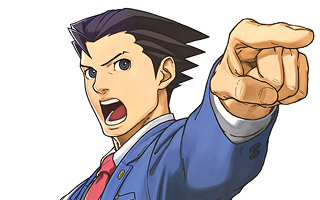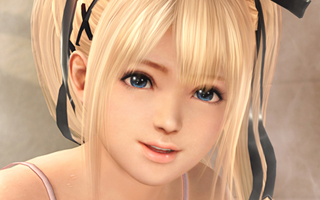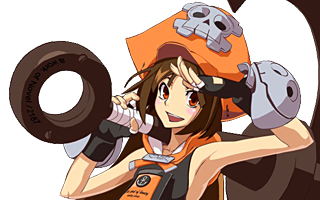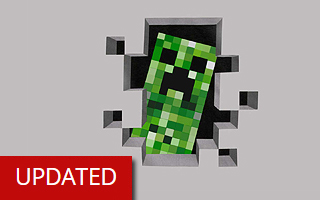Sega Saturn
Top 10 Best Sega Saturn Games of All Time!
After a strong showing during the 16-bit wars, Sega stumbled out of the gate in the 32-bit era. Although the Saturn was relatively powerful for its time, the dual-CPU architecture was unnecessarily complicated and few developers were able to harness its power. Sega had initially planned to launch the Saturn in North America in September of 1995 – exactly one week before Sony’s PlayStation was scheduled to hit store shelves. However, at the first ever Electronic Entertainment Expo (E3) in May 1995, Sega announced that they had trolled everyone and that the Saturn would actually be on store shelves later that day! In their attempt to launch a preemptive strike against Sony, Sega ended up alienating retailers and angering fans who were unable to come up with $400 spur of the moment. Third-parties heavily favored Sony and the new PlayStation, but the Saturn was propped up by a strong lineup of first-party titles from Sega. The system also had a dedicated processor that made it an ideal platform for 2D games. The Saturn was a lot more successful in Japan than in other parts of the world, which isn’t surprising when you consider that many of its best games were confined to Japanese shores.
10
NiGHTS into Dreams…
1996

Sega tried creating new franchises for the Saturn, but to say that Bug, Astal, and Clockwork Knight weren’t as well-received as Sonic would be an understatement. That’s why many were surprised when Sonic Team’s first Saturn release was yet another new IP. NiGHTS is a truly ambitious game that features classic 2D gameplay in 3D environments. The breathtaking visuals provide a great backdrop, the music compliments the gameplay, and the controls are incredibly smooth (especially with the Saturn’s analog controller). It takes a while to get used to the game’s unique play mechanics, but flying around through the imaginative dream world is pure bliss and the trippy boss battles in the nightmare realm are psychedelic. NiGHTS is a textbook example of a game that’s easy to learn yet difficult to master. Although the game is relatively short, the dynamic scoring system adds significantly to the long-term appeal. NiGHTS was completely “‘tude free” and was overshadowed by Super Mario 64, so it didn’t catch on like it should have. Although many were disappointed that Sonic Team never produced a real Sonic game for the Saturn, others point to NiGHTS as Yuji Naka’s true masterpiece. If my dreams were anything like this game, I’d be sleeping right now.
9
Grandia
1997

The PlayStation was well-known for its deep library of RPGs, but the Saturn also had a few notable games for fans of the genre. Grandia didn’t achieve the same level of success that typical Square and Enix games from the era did, but it deserves to be mentioned alongside them. One of the best aspects about Grandia is the absence of random battles. The enemies are visible on the field and can sometimes be ambushed or avoided entirely. The battle system itself is also more interactive and strategic than most RPGs, and it rarely feels monotonous. The graphics aren’t exactly revolutionary, but the ability to control the camera helps with the exploration aspects of the game and can be used to uncover secret passages or hidden items. Without question, the best part about the game is its light-hearted atmosphere. Many RPGs are full of depressing scenarios and self-hating characters, but the protagonists in Grandia actually seem happy as they travel the world looking for adventure. This optimism is quite refreshing, and Grandia has as much in common with The Goonies as it does with Final Fantasy. The fact that the game isn’t bogged down by unnecessarily long monologues or cinematic cutscenes is a big plus as well. Sadly, the second half of the game isn’t nearly as enjoyable as the opening act, and the game falls off hard after Sue leaves the party. The Saturn version of Grandia was never released outside of Japan, so many had to settle with an inferior PlayStation version that was marred by some of the worst voice acting ever heard in a video game.
8
X-Men vs. Street Fighter
1997

As its name suggests, X-Men vs. Street Fighter features characters from both the X-Men franchise and the Street Fighter universe. The game utilizes the same fast-paced style seen in Capcom’s previous Marvel-themed fighting games, but introduces a new “tag team” dynamic. The fighting system consists of two-on-two battles in which the player controls one character, while the other waits off-screen. Each character has their own life bar, and players can switch back and forth between their team members at any point. The PlayStation version was actually released outside of Japan, but it suffered from many setbacks. Specifically, the PS version was missing several frames of animation, the gameplay was slowed down, and the team gameplay was removed. In contrast, the Saturn version of the game included a 4 MB RAM cart that allowed it to retain all the animation and features from the arcade version. Marvel Super Heroes vs. Street Fighter was a fantastic follow-up, but I felt the character selection was stronger in X-Men vs. Street Fighter. You can’t go wrong with either game though, and it’s just unfortunate that North America was given butchered PlayStation versions of the games instead of the arcade-perfect Saturn ports that were released in Japan.
7
Panzer Dragoon II Zwei
1996

Like the first Panzer Dragoon, Zwei is an “on rails” shooter that places the player on the back of a dragon. What sets the Panzer series apart from other games in the genre is the ability aim in multiple directions. Even as your dragon continues to move forward through the levels, you will have the ability to rotate 360º in the saddle in order to destroy enemies beside or behind you. The sequel provides players with more ways to deal with their enemies. You can rapidly fire away with your laser gun, lock onto enemies with the dragon’s homing missiles, or unleash the destructive power of the new berserk attack. Zwei is considerably deeper than the original, with branching paths and alternate routes contributing to higher replay value. The levels themselves are also more varied, and many have your dragon running on the ground instead of flying in the air. This allows for more claustrophobic environments and provides more opportunities for your enemies to sneak up on you. The massive insect-like monster that chases you through the forest made for an epic boss battle. One of the most memorable aspects of Zwei is the manner in which your dragon evolves. Based on your performance, your dragon will undergo physical changes and increase its strength as you advance through the game. Panzer Dragoon built a solid foundation and Zwei was everything a sequel should be.
6
Fighters Megamix
1996

There were a couple of reasons why Fighters Megamix was left off the first rendition of this list. Fighting games already had adequate representation, after all, and Virtua Fighter 2 was carrying the mantle for Sega’s brand of polygon-based pugilism. Virtua Fighter 2 is in a class by itself from both a visual and mechanical standpoint, but Fighters Megamix is more fun to play. True to its name, Fighters Megamix is an ambitious crossover of various franchises. Every character from Virtua Fighter 2 is accounted for, and their movesets were even expanded to include techniques from Virtua Fighter 3! (The sidestep maneuver is especially noteworthy, as it opens the window for all sorts of counter attacks.) The roster also includes every character from Fighting Vipers, and they all brought their destructible attire with them. I’d be remiss not to mention the bonus characters. If Janet from Virtua Cop 2 or the eponymous Rent-a-Hero isn’t weird enough, you’ll also be able to play as the car from Daytona USA or the palm tree from the Sega AM2 logo. It’s one of the most eclectic rosters ever assembled in a fighting game, and I’m glad the developers went to the well instead of relying exclusively on their most popular characters. The game is unbalanced and certain characters have distinct advantages over others, but it’s a blast to play. If you want a technical showpiece, then check out Virtua Fighter 2. If you just want to have fun, then Fighters Megamix is the game for you.
5
Guardian Heroes
1996

Guardian Heroes is a side-scrolling beat ’em up, but it’s much more than a Golden Axe clone. The use of RPG elements helps it stand out from other games in the genre. For instance, players can earn experience points to increase attributes like strength and hit points. These added RPG elements don’t slow the game down, though. In fact, Guardian Heroes is actually one of the most intense games in its genre, thanks to its Street Fighter-inspired super moves. The surprisingly deep story mode has multiple paths to follow, each with their own corresponding final boss. One path even leads to Golden Silver from Treasure’s Gunstar Heroes! There are over 30 stages in total, and you’ll have to play through the game several times to see them all. Naturally, the story mode can be played by two people simultaneously, but the multiplayer aspect doesn’t stop there. As one of the few games to use the Saturn’s multiplayer adapter, Guardian Heroes‘ versus mode actually allows for six people to play at the same time. Even better, players will have the option of choosing from nearly any character they’ve come across in the story mode – including the massive screen-filling bosses! Guardian Heroes is easily one of the coolest games ever released on the Saturn, and I wish more games would incorporate saxophones into their sound design.
4
Panzer Dragoon Saga
1998

The first two Panzer Dragoon games were 3D shooters, so it was surprising when Sega decided to use the series as a basis for an RPG. Panzer Dragoon Saga has a lot in common with its predecessors, and players still spend most of the game on the back of a flying dragon. In this outing, they’re free to explore the world as they please, and they’re no longer slaves to invisible rails. The battle scenes stay surprisingly faithful to earlier Panzer games, and they feel like a perfect marriage of RPGs and shooters. The ability to maneuver around your opponents in real-time allows for battles that are more action-packed than most RPGs. At the same time, the dynamic camera angles add a certain cinematic quality to the combat sequences. The battle system was unique to begin with, but the fact that it has yet to be reused in any form makes Saga feel even more special. Unlike in most RPGs, experience points don’t merely affect your vital statistics. Instead, they contribute to the game’s “dynamic metamorphosis” system that allows your dragon to grow as the game progresses. As your dragon’s attributes increase, its physical appearance will change accordingly. A dragon with a high agility rating will look aerodynamic, while dragons with high defense rating will be rugged in appearances. Saga doesn’t have the deepest story in the world, but the incredible soundtrack and atmospheric visuals work together to create an immersive world. Unfortunately, Saga is surprisingly short – especially for a game that spans four discs. Most players will have no problem reaching the end within 20 hours or so. Despite the brevity, Panzer Dragoon Saga stands as the most noteworthy Saturn exclusive of all time. Only 30,000 copies made it to the North American market, so you might have to sell a kidney in order to play it.
3
Vampire Savior
1998

Known for its fluid animation, fast-paced action, and a bizarre cast of mythological monsters, the Vampire series never really got its due. Vampire (aka Darkstalkers) borrowed heavily from Street Fighter II, but it also featured innovative concepts like air blocking, crouch walking, and chain combos. Many of these features would eventually find their way into subsequent Capcom fighting games. Its anime-inspired graphics were also adopted by the Street Fighter Alpha series. Vampire Hunter improved upon the original with better graphics and new gameplay concepts, but Vampire Savior set the bar even higher. The gameplay in Vampire Savior is blazingly fast, and the game abandons the traditional round-based system that most fighting games adhere to. Instead of dividing the battles into separate rounds, each player in Vampire Savior is given two life bars. When a player depletes their opponent’s first life bar, they retain whatever energy they have left into the next part of the round. One of the most appealing aspects about the Vampire series was its outrageous sense of humor. Incidentally, a fighting game that featured punk rock zombies and sexy succubi was a nice change of pace from the typical ninjas and karate masters that dominated the genre. The animation in Vampire Savior was a little too intense for the PlayStation to handle, but the Saturn version (which required a 4 MB RAM cartridge) was extremely faithful to the original arcade game. It’s just too bad that it was never released outside of Japan.
2
Saturn Bomberman
1997

Like almost every other game in the series, Saturn Bomberman features a single-player story mode that is seldom mentioned. This is because the real magic of the franchise has always been in its multiplayer battle mode. The formula in Saturn Bomberman is largely unchanged from earlier versions, and your basic goal is still to drop bombs, blow up your opponents, and try not to accidentally kill yourself in the process. In addition to the usual power-ups, Saturn Bomberman features five dinosaur sidekicks, each with their own abilities. Also, several classic Hudson characters are selectable – including Bonk and Master Higgins! One of the game’s most notable features is that it supports up to ten players! If you were unable to round up the necessary controllers/multi-taps/people, you also had the option of playing online with Sega’s NetLink modem. This is an expected feature in today’s world, but online gaming was still a novel concept for consoles in 1997. PC Engine and SNES versions of Bomberman were classics in their own right, but the unrivaled multiplayer options in Saturn Bomberman cement it as the best in the series.
1
Street Fighter Zero 3
1999

The Saturn’s architecture made it a perfect fit for fast-paced arcade games and traditional 2D fighters. No game better illustrates this point than Street Fighter Zero 3 (aka Street Fighter Alpha 3). While the first two Zero games were classics in their own right, the third entry in the series was even more ambitious. The gameplay in Zero 3 was completely overhauled, and players were given a variety of fighting styles (known as “isms”) to choose from. (“Z-ism” is based on the first Street Fighter Zero and features a three-level Super Combo gauge; “V-ism” is based on Street Fighter Zero 2 and allows players to create their own custom combos; Finally, “X-ism” features a more simplified single-gauge combo meter and is based on Super Street Fighter II Turbo.) The different fighting styles helped keep the game balanced even though the game had a larger roster than any previous Street Fighter game. Like the PlayStation version before it, the Saturn version of SFZ3 boasted many features that weren’t in the arcade game. Several new gameplay modes were added, and the roster included six characters that weren’t seen in the arcades. Although the PlayStation version was better than it had any right to be, the Saturn version was superior. Not only was the game better-suited for the Saturn’s controller, but the Saturn version had better graphics. By utilizing a 4-MB RAM cart, Capcom was able to include more frames of animation, eliminate slow down, and reduce load times. Surprisingly, the Saturn version even had sharper graphics and smoother animations than the Dreamcast version. More than two decades after its release, Street Fighter Zero 3 on the Saturn still stands as the definitive version of the game.





Do you agree with this list? Let us know what you think by leaving a comment below. Your opinion matters!